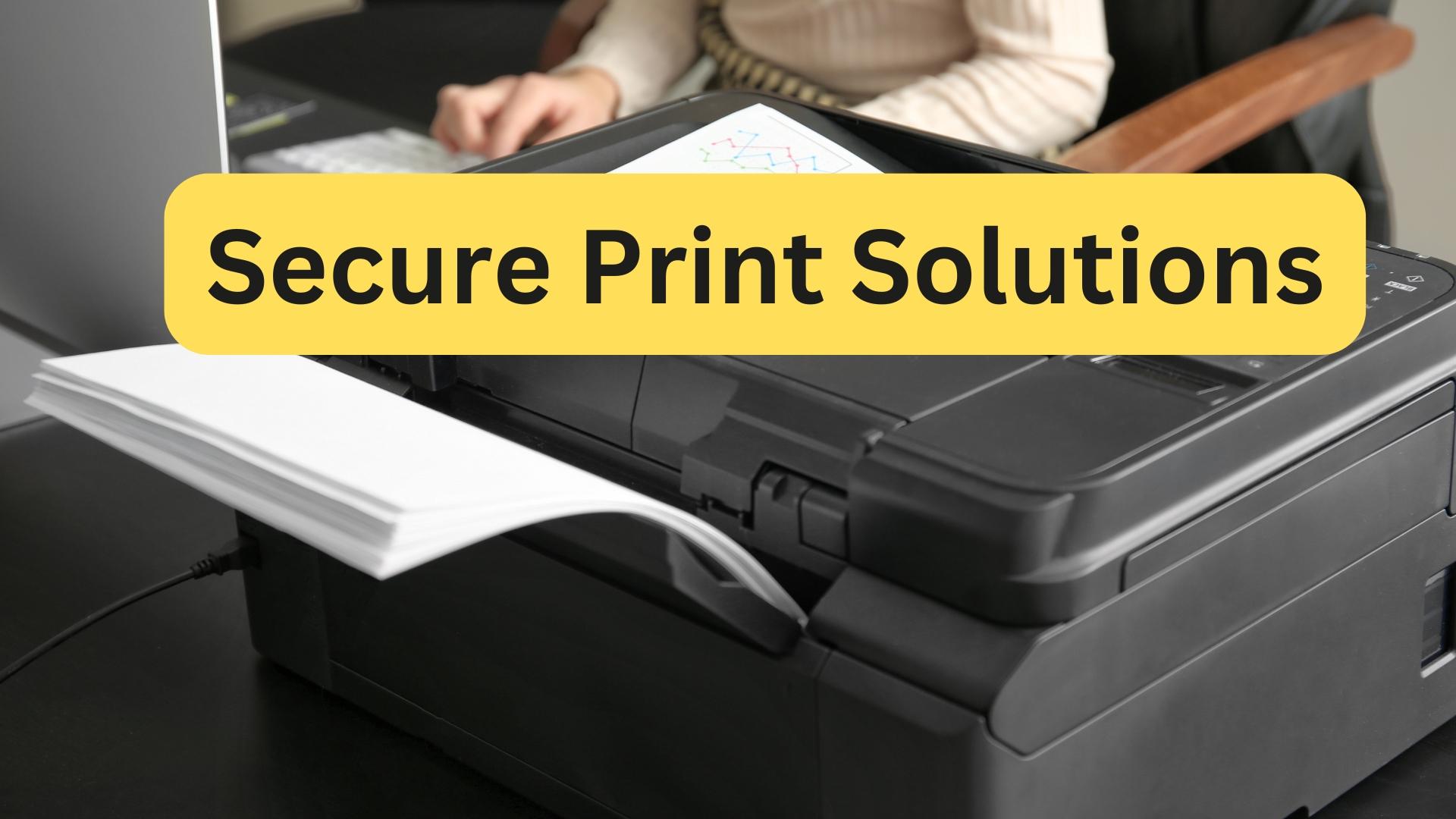Secure Printing Solutions

Pose constant threats, securing every aspect of your organization's workflow is paramount. Printing, a seemingly benign process, often goes overlooked in security strategies. However, secure printing solutions can safeguard sensitive documents, enhance operational efficiency, and foster compliance with data protection regulations.
This article delves into the intricacies of secure printing solutions, their importance, key features, implementation strategies, and how they can transform the way businesses handle document management.
What Are Secure Printing Solutions?
Secure printing solutions refer to technologies and practices designed to protect printed documents from unauthorized access. These systems ensure that sensitive information is accessible only to authorized personnel, safeguarding intellectual property and personal data.
Key Elements of Secure Printing Solutions
-
Authentication
Users must verify their identity using methods like ID cards, PINs, or biometric scans before accessing a printer. -
Data Encryption
Print jobs are encrypted during transmission and storage to prevent interception by malicious actors. -
Access Control
Administrators can define who can print specific documents or access particular devices, ensuring role-based permissions. -
Print Monitoring and Auditing
Real-time tracking and detailed logs provide insights into printing activities, helping to identify unauthorized use.
Why Are Secure Printing Solutions Important?
1. Protecting Sensitive Information
From financial statements to confidential business strategies, printed documents often contain information that can be misused if it falls into the wrong hands. Secure printing solutions minimize this risk.
2. Compliance with Data Protection Laws
Regulations like GDPR, HIPAA, and PCI DSS require organizations to implement robust measures to protect personal and sensitive data. Secure printing helps in meeting these standards.
3. Preventing Unauthorized Access
Whether it’s in a shared office space or a large enterprise, unauthorized access to printers can lead to significant security breaches. Authentication mechanisms act as the first line of defense.
4. Cost Optimization
Secure printing reduces waste by ensuring that documents are only printed when necessary. Features like pull printing, where jobs are released only after user authentication, save resources and money.
Features of Modern Secure Printing Solutions
1. Pull Printing
Users send their print jobs to a central queue and can release them at any printer by authenticating themselves. This ensures documents aren't left unattended.
2. Mobile and Cloud Printing
Secure printing solutions often include options for printing directly from mobile devices or cloud services, ensuring convenience without compromising security.
3. Role-Based Access Controls
Assign specific permissions to users based on their roles within the organization, limiting access to sensitive documents.
4. Automatic Document Deletion
Print jobs that aren’t retrieved within a set timeframe are automatically deleted, reducing the risk of exposure.
5. Secure Release
Printers require user authentication before releasing a document, ensuring only the intended recipient collects it.
Implementing Secure Printing Solutions
Step 1: Assess Current Printing Infrastructure
Evaluate your existing setup to identify vulnerabilities. This includes reviewing printer models, network configurations, and user behaviors.
Step 2: Choose the Right Solution
Select a secure printing solution that aligns with your organization's needs. Consider factors like scalability, compatibility, and features.
Step 3: Deploy User Authentication Systems
Implement robust authentication methods, such as PINs, access cards, or biometrics, across all printing devices.
Step 4: Integrate with Existing Systems
Ensure seamless integration with your IT infrastructure, including cloud services and mobile device management platforms.
Step 5: Train Employees
Educate staff on the importance of secure printing and how to use the new systems effectively.
Top Benefits of Secure Printing Solutions
1. Enhanced Security
Protect sensitive information from unauthorized access and potential breaches.
2. Increased Accountability
Track and monitor all printing activities, holding users accountable for their actions.
3. Better Resource Management
Reduce paper and ink wastage, contributing to environmental sustainability and cost savings.
4. Simplified Compliance
Easily meet legal and regulatory requirements for data protection and privacy.
Case Studies: Real-World Applications
Case Study 1: Financial Institution
A global bank implemented secure printing solutions to prevent unauthorized access to client data. The system reduced breaches by 40% and saved $500,000 annually in printing costs.
Case Study 2: Healthcare Provider
A hospital integrated secure printing to comply with HIPAA regulations. The solution streamlined operations and eliminated incidents of misfiled patient records.
Emerging Trends in Secure Printing
1. AI and Machine Learning
AI-driven analytics help predict and prevent security threats by identifying unusual printing patterns.
2. Blockchain Technology
Blockchain is being explored for secure document verification and traceability in printing workflows.
3. Eco-Friendly Secure Printing
Solutions now focus on reducing carbon footprints, using energy-efficient printers and sustainable materials.
Conclusion
Secure printing solutions are no longer a luxury but a necessity for businesses aiming to protect their data and streamline operations. By incorporating advanced technologies, implementing strict access controls, and fostering a culture of security awareness, organizations can significantly reduce risks and enhance productivity.
- Art
- Causes
- Crafts
- Dance
- Drinks
- Film
- Fitness
- Food
- Games
- Gardening
- Health
- Home
- Literature
- Music
- Networking
- Other
- Party
- Religion
- Shopping
- Sports
- Theater
- Wellness


